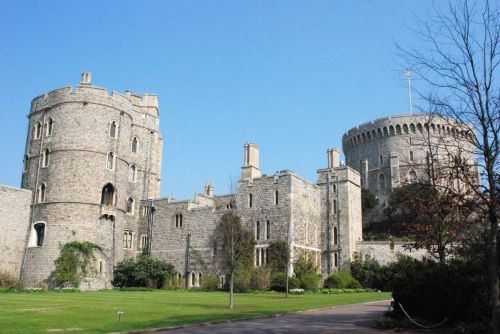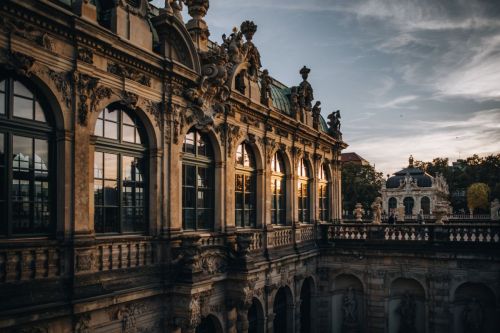Neuschwanstein Castle is one of the most famous and picturesque buildings in Germany. It is located in Bavaria and was built in the 19th century by order of King Ludwig II of Bavaria.
The castle is famous for its unique architecture, romantic history and picturesque location on a hill overlooking the surrounding countryside.
It attracts nearly 1.5 million tourists from all over the world every year and is certainly one of the most beautiful castles in the world.
The castle is located in the municipality of Schwangau, not far from Hohenschwangau Castle, which was built by King Maximilian II of Bavaria.
In addition to Hohenschwangau Castle, which was built on the ruins of the 12th-century Schwansten Fortress, there were two other small castles: Vorderhohenschwangau, consisting of a palace and a fortress, and separated only by a moat from a fortified residential tower called Hinterhohenschwangau.
By the 19th century, only ruins remained of these twin castles. The remains of Hinterhohenschwangau were converted into a viewing platform called the Sylphenturm.
It was also the official hunting and summer residence of Maximilian II, his wife Maria of Prussia, and their two sons:
The king and queen lived in the main building and their sons in the adjacent building. Nearby were the ruins of two medieval castles, which Louis often visited as a boy and sketched in his diary in 1859.
In addition to Neuschwanstein, Ludwig II also built a rococo summer palace - Linderhof in southwestern Bavaria (one of the three royal castles where the ruler lived for a long time) and the neo-Baroque palace of Herrenchiemsee, built on the model of the Paris Versailles (a palace located on the largest of the islands of Lake Chiemsee, the island of Herrenchiemsee).
The first took place in May 1867 in the company of his brother Otto, where he visited the then restored Wartburg Castle near Esenach in Thuringia. In July of the same year, he was in France, where he saw the castle of Pierrefonds, rebuilt from ruins as a historicizing palace.
Both castles made a great impression on him and became a romantic reference to the Middle Ages.
Louis II was a great lover of the composer's music, especially Tannhäuser and Lohengrin, which made a lasting impression on the king.
The castle was dedicated to Wagner's life and work as a "temple of friendship," but the composer never visited, dying in 1883.
The foundation stone was laid on September 5, 1869. In 1872 the cellars were finished and in 1876 everything up to the first floor was built. First, the gatehouse was completed and fully furnished. This made it possible for Louis II to live there and supervise the construction work.
The white limestone used for the facades came from a nearby quarry. The sandstone for the portals and bay windows came from Schlaitdorf in Württemberg, and the marble for the windows, arches, columns, and capitals came from Untersberg near Salzburg.
A steam crane and scaffolding were used to transport the materials.
By 1880, about 200 craftsmen were working on the site, not counting suppliers and other people indirectly involved in the construction. There were times when up to 300 workers were on the site at the same time, working at night by the light of olive lamps.
List includes 465 tons of Salzburg marble, 1550 tons of sandstone, 400,000 bricks and 2050 cubic meters of wood for scaffolding.
In 1870 a society was founded to insure the workers, who paid a small premium (part of which was paid by the King). The heirs of the construction victims (about 30 people are listed in the statistics) received a small pension.
In 1885, Louis II invited his mother, Marie Frederick of Prussia, to the castle to celebrate her sixtieth birthday.
The initial estimate of 3.2 million marks was almost doubled. At first, the king financed the construction with private funds; later, as the building projects escalated, he opened new lines of credit. The king's debt grew steadily. Even when his debt reached 14 million marks, Louis II insisted on continuing his architectural projects, threatening suicide if creditors occupied his palaces.
On June 9, 1886, the king was declared incapacitated and forced to leave the palace. On June 13, Ludwig II died under unexplained circumstances in the shallow waters of Lake Starnberg near Berg Castle in Upper Bavaria.
Ludwig II spent only 172 days at Neuschwanstein.
Construction was stopped and some of the rooms were left unfinished. Today, these rooms, including part of the chapel, remain unfurnished and incomplete.
Only fourteen rooms were ready before the death of the king. They have retained their original appearance and are open to visitors.
In one of the halls there is a colorful stained glass window depicting a scene from Wagner's opera Tannhäuser, which was one of the king's favorite compositions.
In another room there is a massive crystal chandelier that weighs about 2.5 tons. In the king's bedroom, there is an impressive four-poster bed made of massive wood and decorated with gold and crystal elements.
Its construction refers to the chapels and churches of the royal Sicilian Norman-Swabian period in Palermo, linked to the House of Hohenstaufen. This project pays homage to the German legends of Lohengrin, the Knight of the Swans (these themes were taken up in Wagner's operas).
The administrators of King Ludwig's estate managed to pay off the building debts by 1899. From then until World War I, Neuschwanstein became a stable and lucrative source of income for the House of Wittelsbach. Probably all of Ludwig II's castles were the largest source of income for the Bavarian royal family in the years leading up to World War I.
They are currently managed by the Bavarian Palace Administration, a branch of the Bavarian Ministry of Finance.
Situated on the periphery and of no strategic importance, it served until 1944 as a storehouse for Nazi plunder - works looted in France. It was administered by the NSDAP's Einsatzstab Reichsleiter Rosenberg.
The Germans kept a photographic record of the looted works. After World War II, 39 photo albums documenting the extent of the looting were found in the palace. They are currently housed in the United States National Archives.
The building is adorned with numerous towers, ornate turrets, gables, balconies, pinnacles and sculptures. It was built in the Romanesque style, so most of the window openings are designed as biforas and triforas.
It is located so that it can be seen from all directions.
These included a battery-powered bell and telephone lines. The kitchen was equipped with Rumford's stove, which used its heat to rotate the meat being roasted, automatically adjusting the speed of rotation.
Hot air was used in the central heating system with masonry radiators. Other innovations of the time included hot running water and automatic flushing toilets.
Its dimensions are 27 by 10 meters. The first performance in the Singers' Hall took place in 1933. It was a concert commemorating the 50th anniversary of the death of Richard Wagner.
This makes it one of the most popular tourist destinations in Europe. During the peak season from June to August, the castle is visited by up to 6000 people per day.
In 2008, the total number of visitors to Neuschwanstein exceeded 60 million. In 2004, the income was 6.5 million Euros.
It is the most frequently used castle motif in American advertising. As early as 1954, the American magazine "Life" put Neuschwanstein Castle on the cover of a special issue devoted to the German economic miracle.
The castle has inspired many artists, including Andy Warhol, who, after visiting the castle in 1971, created one of his Pop Art sequences based on its appearance.
It was also the inspiration for Sleeping Beauty Castle at Disneyland Paris.
The game was released in 1995 by Sierra / Activision.
They were catalogued under the name of the castle.












